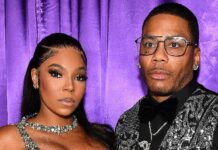 *September isn’t just reserved for remembering Labor Day.
*September isn’t just reserved for remembering Labor Day.
As The Guardian points out, the month is an important time for the magazine industry as it is traditionally viewed as “the most profitable monthly issue for consumer magazines.”
Need proof? How about the fact that six black women have graced the covers various September issues of Vogue (Beyoncé), Shape (Ciara), Self (Kerry Washington), Dazed (Amandla Stenberg), i-D (Willow Smith) and Essence (Misty Copeland). Add Serena Williams on the August cover of New York Magazine it’s plain to see that famous black women are a magnet for magazine readers. Bottom line: if they didn’t sell magazines they wouldn’t be on the cover … not in September of all months.
Although this is currently apparent, it was a slow build-up.
The Guardian notes that 50 years ago, advertisers in southern states ended up taking their business elsewhere after Donyale Luna became the first black model to appear on the cover of Harper’s Bazaar. Luna would continue to make history a year later by becoming the first black woman to grace the cover of Vogue.
Although Naomi Sims followed in Luna’s footsteps as the first African American to appear on the cover of Ladies Home Journal in 1968, work for black models in the ‘60s and ‘70s was confined to cigarette and soft drink companies with ads featuring these models in black magazines like Ebony and Jet.
Slow progress continued as magazine covers in the 80s and 90s were without any black models.
Progress has been slow and there was a long period in the 80s and 90s during which almost no black models were featured, said Charles Whitaker, Helen Gurley Brown professor of journalism at Medill school of journalism at Northwestern University.
“We hit this moment where suddenly it was decided that black women were not doing well on covers any more and that became the conventional wisdom. It was foolish,” Whitaker told The Guardian, adding that the fear was mostly based on anecdotal rather than factual evidence.
“When I was starting out in magazines in the 80s and early 90s, executives openly rued that you couldn’t put a black woman on your cover or you’d lose sales, especially in southern grocery stores. Some would do it anyway,” former American Magazine Editors Association vice-president Peggy Northrop said, although “they’d often pick a ‘safe’ month when sales expectations were relatively low.”
Whitaker goes on to point out that “the drought was over” for black female celebrities when Halle Berry’s appeared on the cover of Cosmopolitan in 2002. That moment resulted in the arrival of “breakthrough celebrities” like Beyoncé and Rihanna, who proved to the magazine industry that they can attract readers across racial and demographic lines, the Guardian notes as it acknowledged other “firsts” on the horizon with Keija Minor named as the first African American editor-in-chief at Brides magazine and becoming the first black person to head a magazine at Condé Nast.
For more on famous black female celebrities and magazine covers, click here. To see reaction to the black female celebrity magazine cover situation, scroll below:
Black women dominating covers of #SeptemberIssue magazines sparking hashtag #blackgirlmagic | https://t.co/NqDRUQfmEk pic.twitter.com/MEKUAqJL3s
— Jeffrey Spivock (@JeffRetail) August 26, 2015
We Publish News 24/7. Don’t Miss A Story. Click HERE to SUBSCRIBE to Our Newsletter Now!





